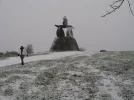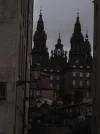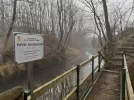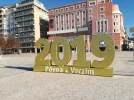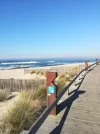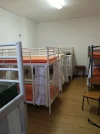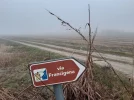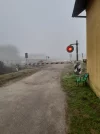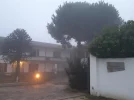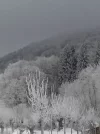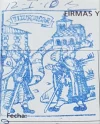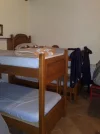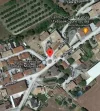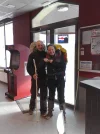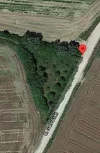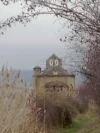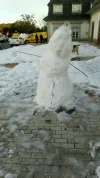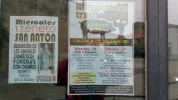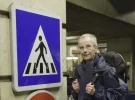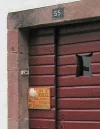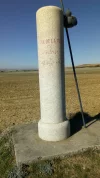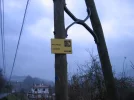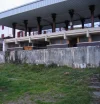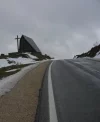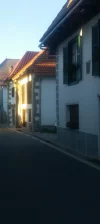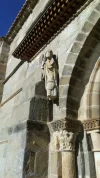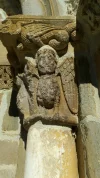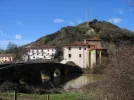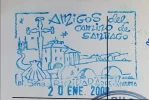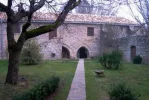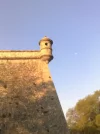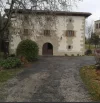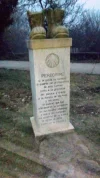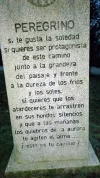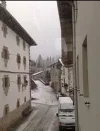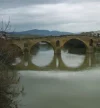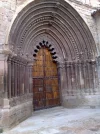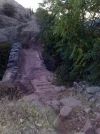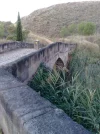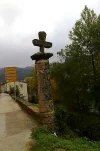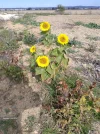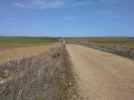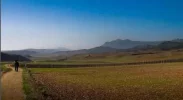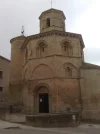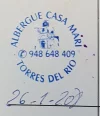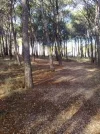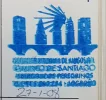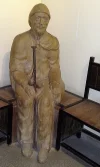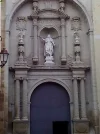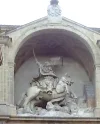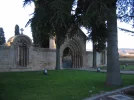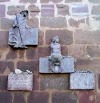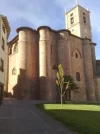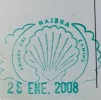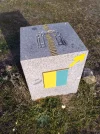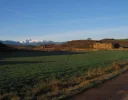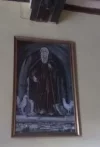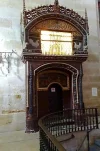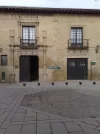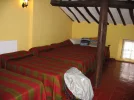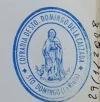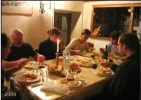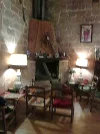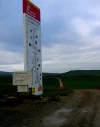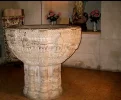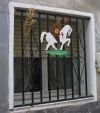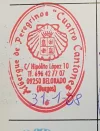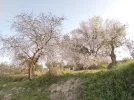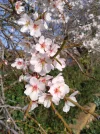From my blog for the third week of January 2008 on the
Camino Frances.
January 22-23, 2008
to Eunate and Puente La Reine
In the cold dawn we 4, ie. the young Spanish couple, Polo and I, returned to the Asador El Tremendo for breakfast at the bar. I suggested that we could avoid climbing up/down the looming Alto de Perdon via a 25 km 'walk around' to Eunate and Puente la Reina which I had followed in 2007 using small roads.
All agreed. We left the CF at Cizur Menor following route NA 6000 generally SE across farmland and a few hamlets .
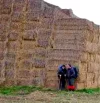
This giant haystack screened our mid morning "loo stop". After walking roughly 14 km we arrived at Campanas early afternoon. A busy truck-stop resto, the Casa Teré, served us a great
menu del dia. Due to knee discomfort the Spanish couple decided to taxi onward.
Polo and I continued walking SE on NA121 to NA601 joining the Camino Aragonés near Ucar. Across frozen fields at Eneriz we followed the calle San Juan/Camino Aragonés.
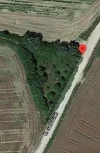
to a tight right turn into the almost hidden back path towards the splendid Eunate church.
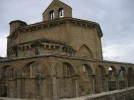
Lost in the countryside this small, octagonal Romanesque structure is mythic. The destinctive design may be based on the Church of the Holy Sepulchre in Jerusalem
Luckily the adjacent albergue had just opened for the 2008 season; Polo and I asked if we might stay the night. Jean, the French hospitalero, invited us to enter and join him and 2 local friends for late afternoon "tea".
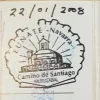

The ambiance was wonderful as we ate delicious goodies and shared much camino gossip in French !
Early evening we 5 visited the church by candlelight and held an almost silent prayer service; all was transcendent, truly beyond this world.
...Later in the albergue applied to the dark dorm ceiling a phosphorescent band of stars, a Milky Way, could be seen leading westward...Magic
What an extraordinary day it had been!
January 23, 2008
After breakfast Polo and I thanked Jean for his gracious hospitality. We then slowly walked along the camino path pausing for this last look at Eunate.
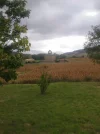
Built by unknown craftsmen one thousand years ago the ocher stones blend with rolling nearby fields now planted with corn and fennel. Here one senses the eternal peace of paradise. ...Silently I prayed that I might be back another year.
It was difficult to shift gears and return to the ordinary world as we walked the 4 km to Puenta la Reina and settled into the albergue run by the Padres Reparadores. Located next to the Church of the Crucifix; pilgrims have been welcomed here for centuries.
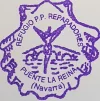
We enjoyed a copious
menu del dia at the La Conrada restaurant, 17 Paseo de los Fueros, which parallels the camino on the south. Polo went to find the post office to send unneeded gear back to France. I, emotionally exhausted, returned to the albergue for a hot shower followed by a siesta.
... Any sightseeing could wait until tomorrow.



